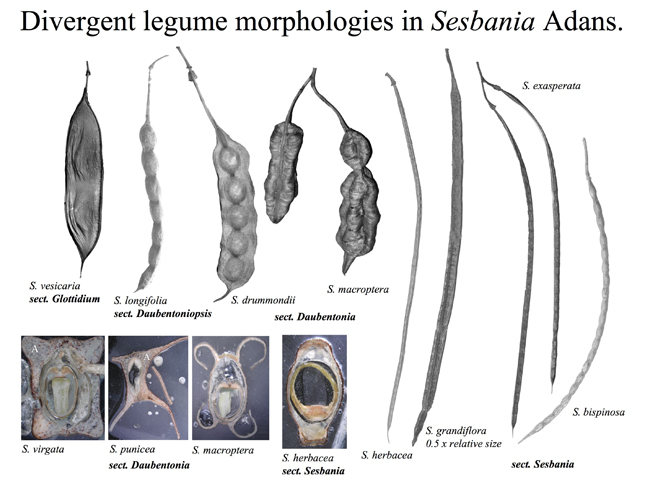Frank T. FarruggiaBiologist, Environmental Protection Agency
Department of Biology
|
|
My interests span a diversity of topics within plant biology. I am especially interested in systematics, evolution, floristics and community ecology. Currently I am working on a taxonomic revision of Solanum section Crinitum. This group represents a distinct clade of species within the spiny solanums (subgenus Leptostemonum) and is thought to include approximately 14 species. This study utilizes DNA sequence data and morphological features to reconstruct the phylogenetic history of the section.
Sesbania Monographic Study My dissertation was a phylogenetic and monographic study of the genus Sesbania (Leguminosae, "Legumes"). This research utilized DNA sequences along with morphology to reconstruct phylogenies using parsimony, maximum likelihood, and Bayesian methods. These phylogenies were used to investigate biogeographic patterns and morphological innovations related to dispersal. In comparison to the sister tribes Robinieae and Loteae. Sesbania's unique ecological preference to wetland and riparian ecosystems has led to specialized morphologies (innovations), which potentially facilitated long-distance dispersal events via hydrochory. My dissertation resolves the phylogenetic relationships among the many species of Sesbania and provides a comparative analysis of biogeographic patterns in an evolutionary context.
Floristics and Community Ecology Belize Future research on these systems must include greater sampling of the interior-upland savannas and similar communities in Yucatan Mexico, Honduras and Nicaragua. I also hope to include phylogenetic history of these communities in the future. The dissimilarity of the species compositions leads me to believe that these communities may have different biogeographic origins, which may be detectable though phylogenetic inference. Parker Creek Canyon, Arizona Other interests As part of a group of researchers at ASU, I investigated the utility of low-copy nuclear genes in the reconstruction of legume phylogenies. This study found that a simple survey technique employed over a broad range of taxa could reveal the potential for a nuclear gene to resolve phylogenetic histories over variable taxonomic levels. A university funded project, on which I worked as a mentor to an undergraduate, was the development of a brochure-based self-guided instructional tour of the ASU Arboretum. This brochure has quickly become a commonly used map on the ASU campus and is now in the development as a downloadable podcast discussion of each of the 130+ species we included. Publications
Ahlquist, T. and F.T. Farruggia. 2007. Arboretum tour guide and campus map of Arizona State University. School of Life Sciences and the International Institute for Species Exploration. PDF
|
|
- campus: a to z index
- map
- directory
- calendar



